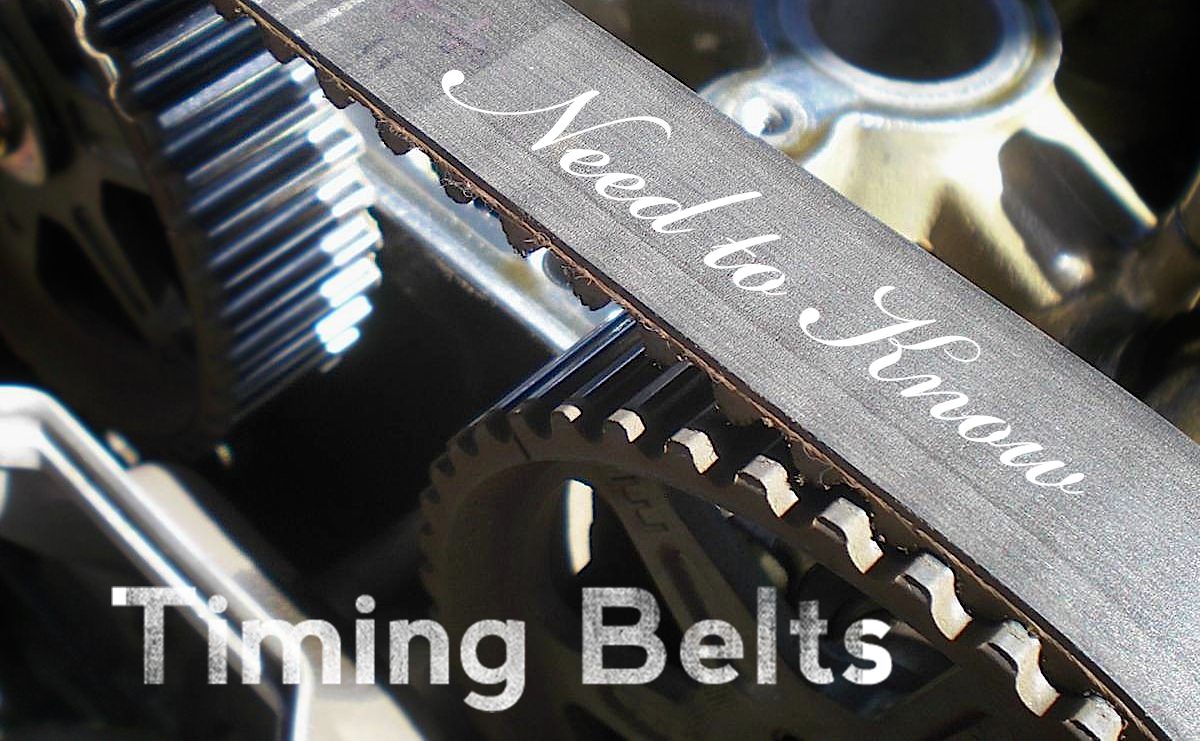Recalls happen for all sorts of reasons. Sometimes, it is a minor issue that you wouldn't even notice. Other times, it's something that should be taken care of ASAP.
One of the greatest dangers to high mileage cars is also one of the least well known. We all know how to maintain our engine oil and to prevent cases of transmission failure, but the death of many high mileage cars is caused by the failure of the timing belt. Lucky for us, its maintenance is predictable and can be scheduled far enough in advance to ensure your vehicle’s health and to give you time to budget for the service.
What is a timing belt?
The timing belt serves a very important role when it comes to making your engine run. Namely, the timing belt is the belt that controls the camshafts in your engine and keeps the entire operation running smoothly. Timing belts are found in cars with overhead cams. The cam shafts open and close the valves in your engine, letting air in to combust and venting it out after firing. The timing belt is calibrated so it moves in time with the motion of the pistons. If the belt breaks or slips, it causes a collision that can be catastrophic to the engine.
Remember when the Death Star exploded at the end of Star Wars? A timing belt failure is EXACTLY like that.
How often should it be replaced?
A timing belt failure is extremely easy to prevent, and although it may not be the cheapest or easiest operation in the world, it is definitely better than purchasing a new engine (or a new car). A good general rule of thumb is that a timing belt should be changed every 100,000-120,000KMs. Some belts are designed to last much longer, and we can give you a good estimate based on your vehicle’s make and model, but this is a good starting point.
How do you know it’s time for replacement?
You will know it is time to have it looked at when the service interval outlined above is approaching. When it comes into the shop we base our main judgement on the manufacture recommended mileage for your timing belt replacement. Because the timing belt is hidden it takes quite a lot of labour just to get a look at it. Once we get inside to remove it there can be telltale signs of damage, especially when the timing belt is very old. Namely we observe:
- Material Loss: Just like a tire, when the belt loses grip it loses traction.
- Belt Abrasion: Tensioner or pulley misalignment can cause the belt’s edges to be worn down.
- Cracking: Noeprene timing belts especially show lots of cracks, which are a sign of excessive wear.
- Glazing: When the belt has a shiny or glossy appearance on the underside it means the belt is getting too stiff and is no longer providing the needed flexibility.
- Pilling: Wearing material starts to build up on the belt causing belt noise and excess vibration.
- Hydroplaning: This occurs when water cannot be dispersed away from the warm belt and pulleys. Water builds up it results in a loss of power to the engine accessories.
- Elongation: Material loss can also cause the belt to stretch moving the tensioner beyond its take-up limit.
- Misalignment: When there is a high level of noise, vibration, and heat, it can be a sign that the tensioner’s internal components may have failed due to excess wear.




